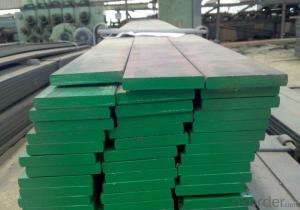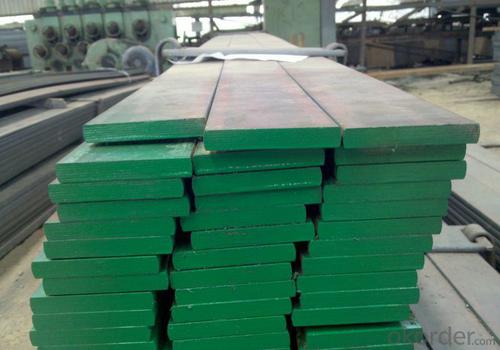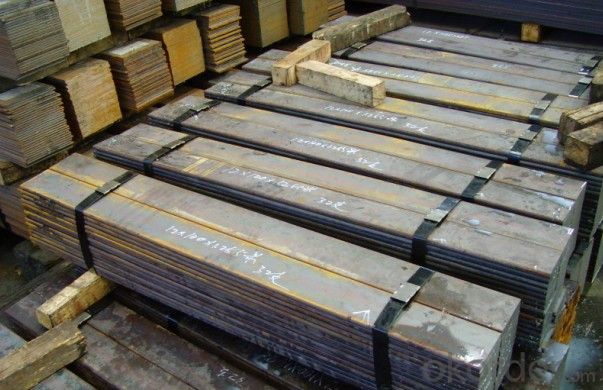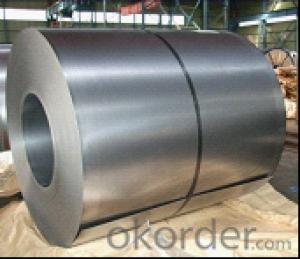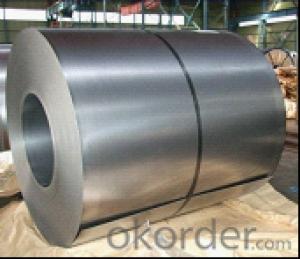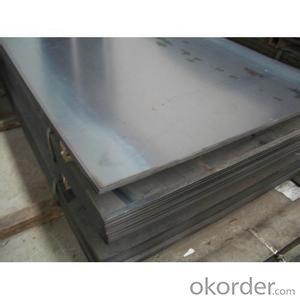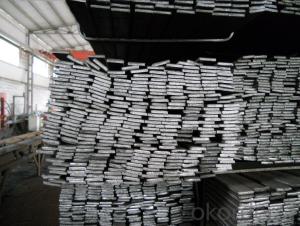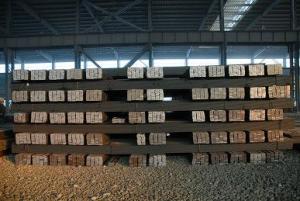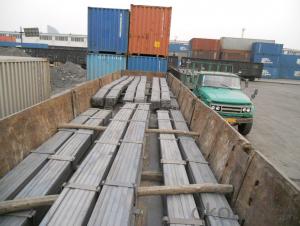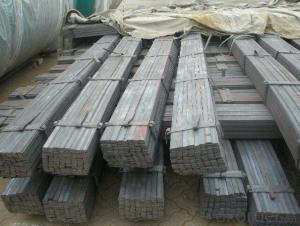Hot Rolled Alloy Leaf Spring Flat Bar
- Loading Port:
- Qingdao
- Payment Terms:
- TT OR LC
- Min Order Qty:
- 2000 PCS
- Supply Capability:
- 38000 PCS/month
OKorder Service Pledge
OKorder Financial Service
You Might Also Like
Hot Rolled Alloy Leaf Spring Flat Bar Details
| Grade: | SUP9,SUP6, SUP7,SUP9 | Standard: | AISI,ASTM,BS,DIN, GB,JIS,JIS G48001:2005 | Thickness: | 10CM |
| Width: | 70CM | Length: | 5800CM,5800mm | Place of Origin: | China (Mainland) |
| Brand Name: | DaQiang | Model Number: | sup9 | Application: | leaf spring making |
| Technique: | Hot Rolled | Special Use: | Mold Steel | Surface: | Plain or double grooved |
| Tolerance: | standard | Packing: | steel strip with 5-7 times | MTC: | offered |
| Bundle weight: | about 2 tons | Raw Material: | hot rolled spring steel flat bar |
Packaging & Delivery
| Packaging Detail: | Export packing : in bundles,packed with 5 clamps along the bundles ,including two clamps in 1.5 meters each head ,three clamps in the middle of bundle .20-25 ton for each 20' container , each bundle weight about 2 tons. |
| Delivery Detail: | 20 days after receiving your deposits, or workable L/C. |
Hot Rolled Alloy Leaf Spring Flat Bar Advantages
1)Authorized Certificates : ISO9001, SGS,BV
2) Day Capacity: 4000tons per day
3) 22 years production experience
4) More than 40000 Tons stock
5) More than 3000 Tons sold per day
Hot Rolled Alloy Leaf Spring Flat Bar Pictures



Hot Rolled Alloy Leaf Spring Flat Bar Specification
Hot rolled spring steel flat bar | ||||
Size | Thickness | 5-45mm | ||
Width | 45-180mm | |||
Length | 5800mm | |||
Samples free for charge | ||||
Packing | In bundle | |||
Bundle Weight | About 2tons | |||
MOQ | 10tons each size | |||
Delivery Time | 20 days after receiving your deposits, or workable L/C. | |||
Payment | 100% Irrevocable documentary L/C at sight ; or 30% deposit in advance and the balance against copy B/L within 3 days . | |||
Application: | Leaf spring | Tools, Blade | ||
SUP9 flat bar | 28MnCrB5, 30MnCrB5 | |||
Main Market: | Asia | Vietnam,Thailand,Myanmar,Malaysia,Indonesia,Philippines,South Korea,India, Bangladesh,Sri Lanka | ||
Latin America | Venezuela, Chile, Colombia, panama, Mexico, Brazil, Peru | |||
Middle East | Iran,Lebanon, Syria | |||
Africa | Egypt, Kenya, Tunisia | |||
European | Spain | |||
- Q: What material can be used for A36 steel plate?
- The A36 plate is used instead of the standard Q345 American Standard.
- Q: What is the hardness of steel sheets?
- The hardness of steel sheets can vary depending on the specific type and grade of steel being used. However, steel sheets are generally known for their high hardness, as they are often heat-treated or alloyed to achieve desired hardness levels.
- Q: Can steel sheets be used for kitchen backsplashes?
- Yes, steel sheets can be used for kitchen backsplashes. Steel is a durable and easy-to-clean material, making it a suitable choice for a kitchen backsplash application.
- Q: What are the dimensions of standard steel sheets?
- The dimensions of standard steel sheets vary depending on the specific type and application. However, common dimensions for standard steel sheets range from 4 feet by 8 feet to 5 feet by 10 feet.
- Q: Are steel sheets suitable for construction applications?
- Yes, steel sheets are highly suitable for construction applications. They offer exceptional strength, durability, and versatility, making them ideal for various construction projects such as buildings, bridges, and infrastructure. Steel sheets are known for their ability to withstand extreme weather conditions and provide structural stability. Additionally, they are cost-effective, easy to install, and can be recycled, making them an environmentally friendly choice for construction.
- Q: What are the different surface treatments available for steel sheets?
- There are several surface treatments available for steel sheets, including galvanizing, electroplating, powder coating, and painting.
- Q: How are steel sheets produced?
- Steel sheets are produced through a process called steel rolling, where large steel slabs are heated and passed through a series of rollers to reduce their thickness and achieve the desired shape and size.
- Q: How do you store steel sheets to prevent damage?
- To prevent damage to steel sheets, it is recommended to store them in a dry, well-ventilated area, away from moisture or humidity. They should be stored horizontally on a flat surface, with adequate support to prevent bending or warping. Additionally, using protective covers or separators between each sheet can help prevent scratches or surface damage.
- Q: How do steel sheets handle water resistance?
- Steel sheets handle water resistance very well due to their inherent properties. Steel is a non-porous material, meaning it does not absorb water. Additionally, steel sheets are often coated with protective layers, such as galvanized or stainless steel finishes, which provide an extra barrier against water penetration. This makes steel sheets highly resistant to corrosion, rust, and water damage, making them suitable for various applications, including roofing, construction, and marine environments.
- Q: Can steel sheets be welded?
- Yes, steel sheets can be welded.
Send your message to us
Hot Rolled Alloy Leaf Spring Flat Bar
- Loading Port:
- Qingdao
- Payment Terms:
- TT OR LC
- Min Order Qty:
- 2000 PCS
- Supply Capability:
- 38000 PCS/month
OKorder Service Pledge
OKorder Financial Service
Similar products
Hot products
Hot Searches
Related keywords
